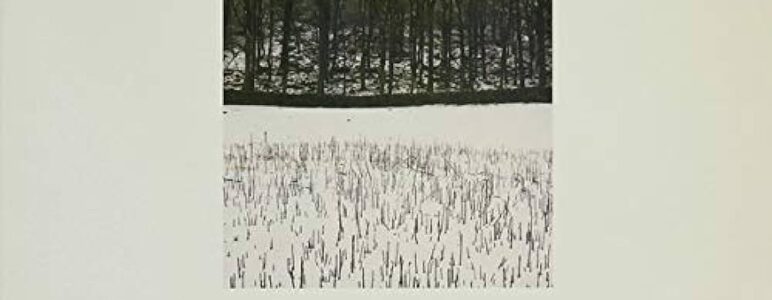The Profound Meaning Behind “Atmosphere”
Joy Division’s track “Atmosphere” stands as a poignant testament to the band’s unique ability to encapsulate deep emotion and existential contemplation in their music. Released initially in 1980, the song resonates with themes of isolation, introspection, and the struggles of the human condition. Its lyrics, penned by the iconic Ian Curtis, paint a haunting picture of inner turmoil and emotional desolation, which are emblematic of Curtis’s own battles with depression and epilepsy.
Curtis’s evocative words in “Atmosphere” invite listeners into a space where feelings of sorrow and beauty coexist. The repeated line, “Walk in silence,” suggests a journey through an emotional landscape that is both solitary and profound. This exploration of silence and stillness speaks to the band’s broader thematic focus on the darker aspects of life and the human psyche.
The song’s title itself, “Atmosphere,” hints at a pervasive feeling or mood rather than a specific narrative or story. It captures an intangible essence that permeates the listener’s experience, evoking a sense of timelessness and space. This is further reinforced by the song’s minimalist instrumentation and haunting production, which create an ethereal and immersive soundscape.
Inspiration and Creative Process
“Atmosphere” was created during a period of intense creativity and personal strife for Joy Division. The band, consisting of Ian Curtis, Bernard Sumner, Peter Hook, and Stephen Morris, had been pushing musical boundaries with their post-punk sound, which combined raw emotion with innovative production techniques.
The inspiration for “Atmosphere” is closely linked to Ian Curtis’s personal experiences and mental state. His struggles with epilepsy and the pressures of his burgeoning fame are often cited as key influences on his songwriting. The somber and reflective nature of “Atmosphere” can be seen as a reflection of Curtis’s inner battles, offering listeners a glimpse into the mind of a troubled yet brilliant artist.
Curtis’s epilepsy, diagnosed in 1979, had a profound impact on both his personal life and his performances. The unpredictability of his seizures and the side effects of his medication contributed to his growing sense of isolation and despair. These feelings are palpable in “Atmosphere,” where the lyrics convey a deep sense of resignation and introspection.
The creative process behind “Atmosphere” also reflects the band’s collective dynamics and their ability to translate individual struggles into a cohesive artistic vision. Bernard Sumner’s atmospheric guitar work, Peter Hook’s melodic bass lines, and Stephen Morris’s understated drumming all contribute to the song’s haunting ambiance. The production, overseen by Martin Hannett, enhances the track’s ethereal quality with reverb and echo effects, creating a sense of space that mirrors the song’s themes of isolation and introspection.
In an interview, Bernard Sumner described the recording sessions for “Atmosphere” as intense and emotionally charged, reflecting the band’s commitment to capturing the raw essence of their sound. This dedication to authenticity and emotional truth is evident in the finished track, which stands as one of Joy Division’s most enduring and powerful songs.
“Atmosphere” was initially released in France as a single under the title “Licht und Blindheit” (“Light and Blindness”) in March 1980. This release included “Dead Souls” as the B-side. After the tragic death of Ian Curtis in May 1980, “Atmosphere” was re-released in the UK by Factory Records with “She’s Lost Control” on the B-side.
The re-release of “Atmosphere” was accompanied by a music video directed by Anton Corbijn, who would become closely associated with Joy Division and later New Order. The video, shot in black and white, features ghostly images of hooded figures and stark landscapes, perfectly capturing the song’s haunting and somber mood. Corbijn’s visual interpretation of “Atmosphere” adds another layer of depth to the song, enhancing its emotional impact and further cementing its place in the pantheon of post-punk classics.
Key Themes and Lyrics
“Atmosphere” delves into themes of alienation, introspection, and the passage of time. The song’s lyrics are sparse yet powerful, creating an ethereal and haunting atmosphere that lingers long after the music fades. Lines like “People like you find it easy” and “But love will tear us apart again” (a nod to another of their famous songs) evoke a sense of inevitability and resignation.
The song’s minimalistic structure and repetitive motifs reinforce its themes, allowing listeners to become fully immersed in its emotional landscape. The interplay between the lyrics and the instrumental arrangement creates a sense of space and depth, making “Atmosphere” a truly immersive listening experience.
The Iconic Music Video for “Atmosphere”
The music video for Joy Division’s “Atmosphere” is a masterpiece in its own right, perfectly encapsulating the haunting and melancholic essence of the song. Directed by the renowned Dutch photographer and filmmaker Anton Corbijn, the video was released posthumously after Ian Curtis’s tragic death in May 1980. Corbijn’s visual interpretation of “Atmosphere” has become synonymous with the song, adding a powerful layer of visual storytelling to its already profound emotional impact.
Visual Aesthetics and Themes
The video for “Atmosphere” is shot entirely in black and white, which immediately sets a somber and introspective tone. This monochromatic palette enhances the starkness and emotional gravity of the song, aligning with Joy Division’s minimalist and raw aesthetic. The absence of color in the video strips away any distractions, focusing the viewer’s attention on the symbolic imagery and the haunting atmosphere that Corbijn meticulously crafts.
The video features a series of evocative and surreal images, including ghostly, hooded figures moving through desolate landscapes. These figures, dressed in flowing robes, evoke a sense of otherworldliness and mystery. They traverse empty beaches and barren fields, creating a visual metaphor for the themes of isolation and alienation present in the song. The hooded figures can be seen as representations of lost souls, wandering aimlessly in a bleak and unforgiving world.
Symbolism and Interpretation
One of the most striking aspects of the video is its use of symbolism. The hooded figures, devoid of identity, mirror the song’s exploration of the human condition’s darker, more universal aspects. Their slow, deliberate movements convey a sense of inevitability and resignation, echoing the lyrical themes of silence and introspection. The stark, empty landscapes they inhabit further emphasize the song’s themes of desolation and emotional emptiness.
In several scenes, the hooded figures carry large, flag-like banners. These banners, blowing in the wind, add a dynamic element to the otherwise static and contemplative visuals. They may symbolize the burdens or emotional weights that individuals carry through life, unseen yet ever-present. The wind’s relentless force against the banners also represents the external pressures and forces that shape and influence human experience.
Corbijn’s Influence and Legacy
Anton Corbijn’s direction is crucial to the video’s lasting impact. Known for his distinctive visual style and ability to capture the essence of his subjects, Corbijn brought a unique and deeply resonant interpretation to “Atmosphere.” His use of stark contrasts, minimalist compositions, and evocative imagery has become a hallmark of his work with Joy Division and later, New Order.
Corbijn’s collaboration with Joy Division began with his iconic photography of the band, which helped define their visual identity. The “Atmosphere” video marked the beginning of a long-standing relationship between Corbijn and the band members, continuing into their later incarnation as New Order. His visual contributions have played a significant role in shaping the public’s perception and memory of Joy Division, blending the audio and visual elements into a cohesive and impactful artistic statement.
Version and Release History
The history of “Atmosphere” is as compelling as the song itself. It was first released in France as a single under the title “Licht und Blindheit” (“Light and Blindness”) in March 1980. This release included “Dead Souls” as the B-side. After the tragic death of Ian Curtis in May 1980, “Atmosphere” was re-released in the UK by Factory Records with “She’s Lost Control” on the B-side.
The re-release of “Atmosphere” was accompanied by a music video directed by Anton Corbijn, who would become closely associated with Joy Division and later New Order. The video, shot in black and white, features ghostly images of hooded figures and stark landscapes, perfectly capturing the song’s haunting and somber mood.
Similar Tracks and Influences
For those captivated by “Atmosphere,” there are several other tracks by Joy Division and contemporary artists that evoke similar feelings of melancholy and introspection. Songs like “Disorder,” “Shadowplay,” and “New Dawn Fades” from Joy Division’s debut album “Unknown Pleasures” share the same raw emotional intensity and existential themes.
Other bands influenced by Joy Division’s sound include The Cure, with tracks like “A Forest” and “Lullaby,” and Bauhaus with “Bela Lugosi’s Dead.” These songs similarly explore dark and atmospheric soundscapes, blending post-punk aesthetics with gothic overtones.
Notable Cover Versions
“Atmosphere” has been covered by numerous artists over the years, each bringing their unique interpretation to the song while preserving its emotional core. One of the most notable covers is by the band Codeine, whose slowcore rendition accentuates the song’s melancholic undertones.
Another significant cover is by the electronic duo A Certain Ratio, who infused the track with their distinctive post-punk funk style. This version highlights the versatility of “Atmosphere” and its ability to transcend genres while maintaining its haunting beauty.
The Enduring Legacy of “Atmosphere”
“Atmosphere” remains one of Joy Division’s most beloved and enduring tracks, continuing to resonate with listeners decades after its release. Its haunting beauty and profound emotional depth make it a standout piece in the band’s discography and a testament to Ian Curtis’s songwriting genius. The track’s exploration of isolation and inner turmoil speaks to the universal human experience, ensuring its relevance for generations to come.
For further exploration of Joy Division and “Atmosphere,” consider visiting the following links:
- Joy Division Central – A comprehensive resource for everything related to Joy Division, including song interpretations and band history.
- Factory Records – The label that brought Joy Division to the world, with detailed information on their releases and legacy.
- Anton Corbijn’s Official Site – Insights into the work of the director behind the iconic “Atmosphere” music video.
“Atmosphere” continues to captivate and inspire, standing as a powerful reminder of Joy Division’s impact on music and culture.

